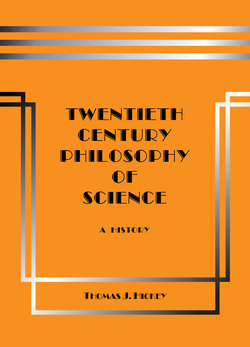Читать книгу Twentieth-Century Philosophy of Science: A History (Third Edition) - Thomas J. Hickey - Страница 71
На сайте Литреса книга снята с продажи.
3.40 Ontology of Mathematical Language
ОглавлениеIn the categorical proposition the logically quantified subject term references individuals and describes the attributes that enable identifying the referenced individuals, while the predicate term describes only attributes without referencing the instantiated individuals manifesting the attributes. The referenced extramental real entities and their semantically signified extramental real attributes constitute the ontology described by the categorical proposition that is believed to be true due to its experimentally or otherwise experientially demonstrated empirical adequacy. These existential conditions are expressed explicitly by the copula term “is” as in “Every raven is black”.
However, the ontological claim made by the mathematical equation in science is not only about instantiated individuals or their attributes. The individual instances referenced by the descriptive variables in the applied mathematical equation are instances of individual measurement results, which are acquired by executing measurement procedures that yield numeric values for the descriptive variables. The individual measurement results are related to the measured reality by nonmathematical language, which includes description of the measured subject, the metric, the measurement procedures, and any apparatus described in test-design language. Also calculated and predicted values for descriptive variables describing effects in equations with measurement values for other variables describing causal factors make ontological claims, which are tested empirically. Untested theories make relatively more hypothetical quantitative causal claims. Tested and nonfalsified equations make quantitative causal laws.
